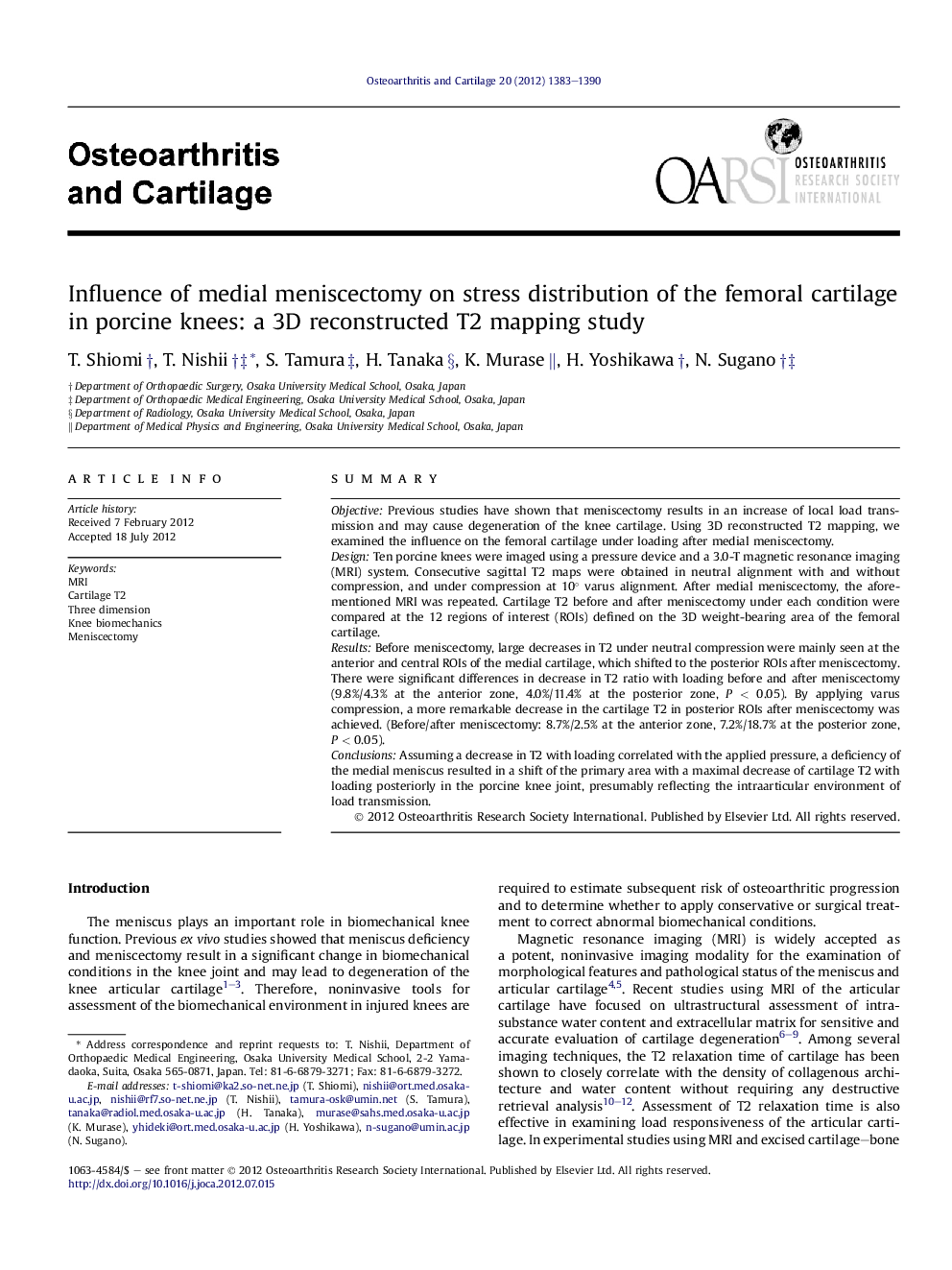| کد مقاله | کد نشریه | سال انتشار | مقاله انگلیسی | نسخه تمام متن |
|---|---|---|---|---|
| 3379912 | 1220186 | 2012 | 8 صفحه PDF | دانلود رایگان |

SummaryObjectivePrevious studies have shown that meniscectomy results in an increase of local load transmission and may cause degeneration of the knee cartilage. Using 3D reconstructed T2 mapping, we examined the influence on the femoral cartilage under loading after medial meniscectomy.DesignTen porcine knees were imaged using a pressure device and a 3.0-T magnetic resonance imaging (MRI) system. Consecutive sagittal T2 maps were obtained in neutral alignment with and without compression, and under compression at 10° varus alignment. After medial meniscectomy, the aforementioned MRI was repeated. Cartilage T2 before and after meniscectomy under each condition were compared at the 12 regions of interest (ROIs) defined on the 3D weight-bearing area of the femoral cartilage.ResultsBefore meniscectomy, large decreases in T2 under neutral compression were mainly seen at the anterior and central ROIs of the medial cartilage, which shifted to the posterior ROIs after meniscectomy. There were significant differences in decrease in T2 ratio with loading before and after meniscectomy (9.8%/4.3% at the anterior zone, 4.0%/11.4% at the posterior zone, P < 0.05). By applying varus compression, a more remarkable decrease in the cartilage T2 in posterior ROIs after meniscectomy was achieved. (Before/after meniscectomy: 8.7%/2.5% at the anterior zone, 7.2%/18.7% at the posterior zone, P < 0.05).ConclusionsAssuming a decrease in T2 with loading correlated with the applied pressure, a deficiency of the medial meniscus resulted in a shift of the primary area with a maximal decrease of cartilage T2 with loading posteriorly in the porcine knee joint, presumably reflecting the intraarticular environment of load transmission.
Journal: Osteoarthritis and Cartilage - Volume 20, Issue 11, November 2012, Pages 1383–1390